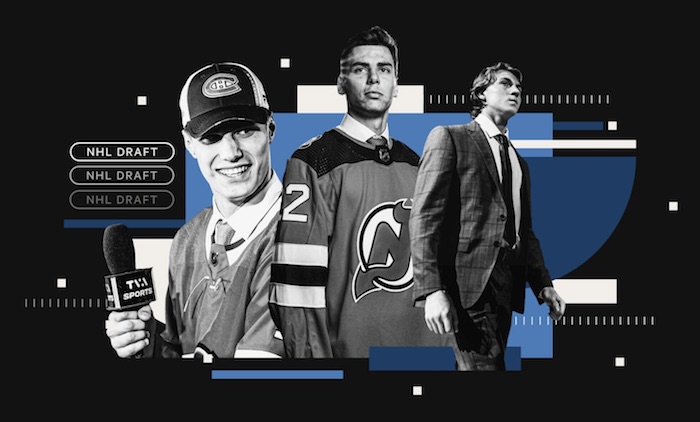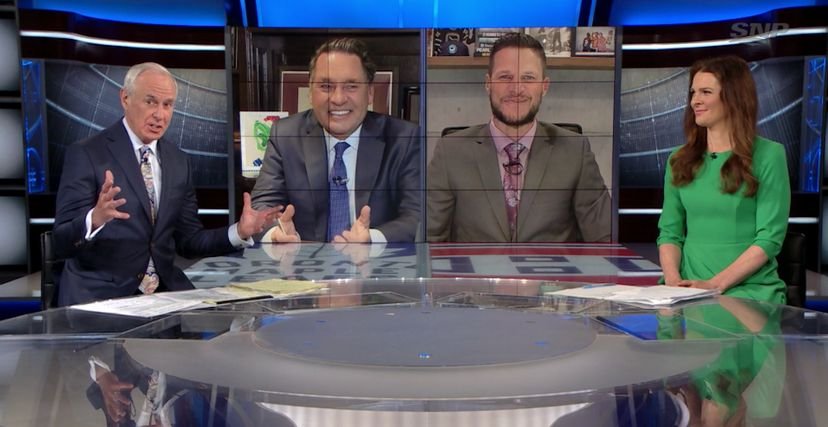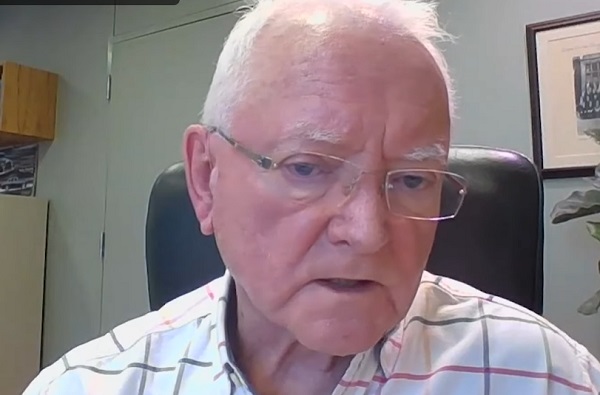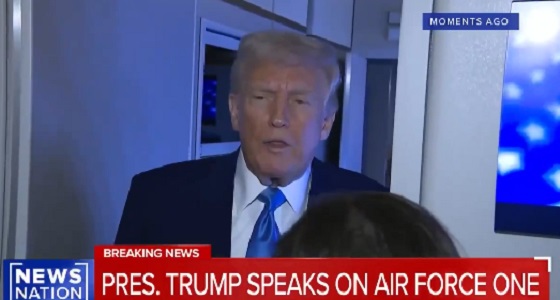Bruce Dowbiggin
NHL Stardom: It’s A Money Thing

[Sign up today for Not The Public Broadcaster newsletters. Hot takes and cool slants on sports and current affairs. Have the latest columns delivered to your mail box. Tell your friends to join, too. Always provocative, always independent.]
One of the striking observations from the otherwise uneventful #nhldraft2022 was how homogenous the kids were from a social POV. These weren’t humble farm boys and blue-collar sloggers. This wasn’t J.C. Tremblay, one of 13 kids from Bagotville, Quebec, or Gordie Howe from tiny Floral, Saskatchewan. These prospects were middle-, upper-middle class products of a multi-million dollar development process. It’s not a sport for paupers.
It also helps to have a parent or supporter who’s been in the hockey industry, too. Brad Lambert, drafted by Winnipeg in the first round, is the nephew of NY Islanders coach Lane Lambert. St. Louis pick Jimmy Snuggerrud is a third-generation player who father Dave played four NHL seasons. Etc.
As we asked in August of 2021 , “Are today’s superstars a product of more than talent? Are they also the products of an expensive, exclusive grooming process that leaves the Bobby Hull farm-boy archetype in the dust?
One hint of the benefit of having access to resources and people within the hockey industry is the annual spate of sons of former NHLers now being drafted each summer. In the recent draft, there was a plethora of progeny selected, many at the very top of the draft. No other league has such a high percentage of sons being selected.
There have always been a few NHL father/ son duos. Gordie Howe’s boys and Bobby and Brett Hull spring to mind. But they were not as pervasive in the league as they are today. Witness the 2021 Draft that saw a host of familiar family names getting new surnames.

Cole Sillinger (Mike), Tyler Boucher (Brian), Josh Doan (Shane), Redmond Savage (Brian), Ryan St. Louis (Martin); Shane Lachance (Scott); Nick Malik, Marek), Justin Robidas, (Stephane), Jackson Blake (Jason) and Chase Stillman (Cory) were among the sons of famous fathers drafted. Others were signed as free agents.
It was no fluke. A glance around the NHL shows many sons of former stars getting steady work. Matthew and Brady Tkachuk (Keith), Kasperi Kapanen (Sami), Brandon Sutter (Brent), William and Alex Nylander (Michael), Sam Reinhart (Paul), Max Domi (Tie), Samuel Poulin (Patrick), Tag Bertuzzi (Todd), Ryan Johnson (Craig), Tyson Barrie (Len), Landon Ferraro (Ray), Marcus and Nick Foligno (Mike), Nolan Foote (Cal), Ryan MacInnis (Al) Brendan Lemieux (Claude), Ryan Donato (Ted), Daniel Audette (Donald) and Dominic Turgeon, (Pierre) are just a sampling of the direct relationship between father and sons.
The hockey pipeline is full of young men whose fathers could give them a hockey education but who also knew many of right people to tap into. The sophisticated training and arduous diet regimes are getting more like Tom Brady and less like Gump Worsley. And they’re expensive— even in Howe’s home nation of Canada which honours its roots.
This discipline and access is reflected in the United States where the boom in hockey participation is resulting not in farm boys and rink rats but in privileged sons and daughters of highly paid NHL stars getting an inside track on make the league or the Olympics.
NHL veterans in both the U.S., Europe and Canada know the inner workings of agents, independent training academies and skill trainers to help their sons past some of the highest hurdles in development. If they handled their millions properly they also have the funds to open doors for young stars.
As we wrote in this obit for Walter Gretzky, the elite training he gave Wayne has spawned many costly and hard-to-access training methods for people like him, a former telephone technician.
“With the success of Gretzky’s training model— plus the importation of European skill training— families realized that if their sons and daughters wanted to be world-class athletes they were going to have to reject the Don Cherry ”Try Harder” school and imitate the techniques Gretzky had used on his son. Within a decade, getting the proper coaching and fitness to become a star became a growth industry.
Power skating, off-ice training, ice rentals, new equipment, travel and coaching all became necessary to get a leg up on the competition. It was also very expensive. Having the resources to send your child to the top fitness gurus like Gary Roberts or to place them in a school like Shattuck St. Marys (as Sidney Crosby was) becomes a process costing tens— or hundreds— of thousands of dollars.
Author Malcolm Gladwell popularized the notion of taking 10,000 hours to translate talent into the finished product of a genius. It takes money to allow a young person that time, money that only a select number of families can provide. If you are a child in a single-income home or in a remote part of the country away from facilities, equipping and training a young prospect quickly gets out of the reach of parents of modest means.
Perhaps the most telling development story was that of Montreal goalie Carey Price, whose father bought a $13,000 four-seat Piper Cherokee plane to fly young Carey back and forth 320 kilometres to hockey practices all winter in northern B.C.
Where the NHL was predominantly players from blue-collar backgrounds till the Euros arrived in the 1970s, today it is often constituted of young men from families of means and education. The idea of the farming father of the six Sutter brothers affording his sons’ training today is highly improbable. Today’s NHL has a number of college-educated players and products of dedicated European training.
In that way, through no fault of Walter Gretzky, hockey has become a sport for families of means or friends with means. He taught parents that the proper training and equipment was imperative. And that doesn’t mean simply the rink in your backyard. When a new pair of skates cost $500, a stick costs $125 or a set of goalie equipment runs into thousands of dollars you are losing a segment of the population to financial costs. And so Walter’s legacy of training development is forever tied to a big price tag.”
To say nothing of the progeny of NHL stars helping give their kids a hand-up in making it to the league and its vast piggy bank.
Bruce Dowbiggin @dowbboy is the editor of Not The Public Broadcaster (http://www.notthepublicbroadcaster.com). The best-selling author was nominated for the BBN Business Book award of 2020 for Personal Account with Tony Comper. A two-time winner of the Gemini Award as Canada’s top television sports broadcaster, he’s also a regular contributor to Sirius XM Canada Talks Ch. 167. His new book with his son Evan Inexact Science: The Six Most Compelling Draft Years In NHL History is now available on http://brucedowbigginbooks.ca/book-personalaccount.aspx
Bruce Dowbiggin
Bettman Gives Rogers Keys To The Empire. Nothing Will Change

Good news if you like the way Rogers Sportsnet covers hockey in Canada. You’re about to get a whole lot more of it. In a move that sums up Gary Bettman’s unique broadcast philosophy the NHL has awarded the Canadian TV/ digital/ streaming rights to Rogers for the next 12 years. The price tag? 12 billion U.S. dollars (about $16.B CDN dollars).
While the pattern in modern sports broadcasting rights has been toward sharing the wealth among competing bidders— the NFL has six distinct partners— Bettman the contrarian has opted for a different notion. He’s all in with one Canadian partner, and let his critics STFU.
As opposed to the previous CDN national monopoly awarded to Rogers in 2013 this one bestows national rights in all languages across TV, streaming and digital for all regular-season and playoff games, plus the Stanley Cup Final and all special events. This extends to coverage in all regions. There are some concessions for Rogers to sell limited cutout packages, such as the Monday Night Amazon package they’ve created.
Presuming Pierre Poliievre doesn’t get his way with CBC, Rogers will likely piggyback on their time-sharing agreement for Saturday Hockey Night In Canada to get CBC’s network reach. (There remain many hockey fans who still think CBC has the NHL contract. Go figure.)
Translation: there will be no regional packages for TSN to produce Montreal Canadiens, Ottawa Senators or Toronto Maple Leafs games, for instance. But there will be regional blackouts, because nothing says we are proud of our product like denying it to a larger audience. Conn Smythe would be proud.
At the presser to announce the deal Rogers and Bettman were coy about how much they will charge consumers for the honour of being inundated by content in what now seems likely to be a 36-team league by the time the deal expires. Will costs be added to cable/ satellite packages? How much for streaming? With stories circulating that Rogers massively overbid for the package to get the monopoly it’s apparent that the phone company will be turning over every nickel to make it worthwhile.
Fans are apprehensive and over-saturated with hockey content already. For that reason, the NHL is now desperately looking for ways to lessen the tedium of the 82-game regular schedule with midseason content like the 4 Nations Cup or a World Cup format. In Canada’s hockey-mad environment Rogers will have a passionate market, but even the most fervent fans will only spend so much for their fix.
Already, Rogers is trumpeting its re-acquisition with commercials featuring Ron Maclean doing his breathy feels-like-home voice about how Sportsnet is the natural landing spot for hockey until many of us are dead. Bettman made cooing noises about Rogers’ commitment at the announcement.
But let us cast our minds back to 2013 when the last Rogers/ NHL deal was concocted. We were the sports media columnist at the Mop & Pail at the time and much was made that Rogers would be a technological marvel, re-inventing the way we watched hockey. There would be new camera angles, referee cams, heightened audio, refreshed editorial content etc.

As hockey fans now know Rogers dabbled in the brave new world briefly, blanched at the cost of being creative and largely went back to doing hockey the way it had always been done. Taking no risks. On some regional casts that meant as few as three or four cameras for the action.
But if you were expecting dashboard cameras and drone shots you were sadly disappointed. Similarly there was a brief stab at refreshing the pre-, mid- and postgame content. Hipster George Stromboulopoulos was brought in as a host to attract a larger female audience.
But pretty soon Strombo was gonzo, replaced by the anodyne David Amber (whose dad was once the leader of the journalist union at CBC). Women like former player Jennifer Botterill were brought in to change the gender balance on panels. They then acted pretty much like guys, chalk-talking viewers into numbness. Appointment viewing has become a fallback choice.
The move away for anything controversial came in 2019 with Rogers’ axing of Don Cherry’s Coach’s Corner in a flap over the former coach’s continuing ventures into political or cultural content. Maclean slipped the knife into his meal ticket and continued on the show. After time in limbo, doing location shoots, he was returned full-time to the desk.

As we wrote in June of 2022, the one exception to the standard “serious, sombre, even a touch grim” tone is former defenceman Kevin Bieksa. “Bieksa has been a moveable feast. His insouciance with media has become his ragging on the fellow panelists during intermissions that used to be as much fun as skating in July.” His banter with “insider” Elliotte Friedman is now a lone concession to wit on the show.
Intermissions are numbingly predictable, and Rogers’ stable of analysts and play-by-play announcers outside of HNIC is unchallenging to the orthodoxy of PxP being a radio call over TV pictures. Name one star beside Bieksa that has been produced by Rogers’ “safe” broadcast style since 2013. They’d fit in perfectly in a 1980s hockey broadcast. Now compare it with the lively Amazon broadcasts hosted by Adnan Virk and Andi Petrillo.
This leaves a lingering question. What happens to TSN? Many prefer the editorial and studio profile of TSN on Trade Deadline Day or Free Agent frenzy. TSN locked up its stars such as James Duthie and Bob McKenzie when the last deal was signed. But there isn’t enough live content this time to support keeping a full roster anymore. Who will stay and who will go? (TSN’s president Stewart Johnson is the new commissioner of the CFL).
And with Rogers taking full control of MLSE (Maple Leafs, Raptors, Argos, Toronto FC) TSN is left with the CFL and packages of NFL, golf, tennis, some auto racing and international soccer. Is that enough on which to float a network? There have been rumours that Bell, owner of TSN, is interested in divesting itself of the high cost of sports broadcasting. Should that happen— who has the money to replace them?— the effect will be seismic in Canadian broadcasting.
For now, watch how much pressure the NHL puts on Rogers to up its game. More importantly what will happen when Bettman finally retires and the league has a new vision since 1992? Rogers has sewn up its end. Will the audience go with them?
Bruce Dowbiggin @dowbboy is the editor of Not The Public Broadcaster A two-time winner of the Gemini Award as Canada’s top television sports broadcaster, his new book Deal With It: The Trades That Stunned The NHL And Changed hockey is now available on Amazon. Inexact Science: The Six Most Compelling Draft Years In NHL History, his previous book with his son Evan, was voted the seventh-best professional hockey book of all time by bookauthority.org . His 2004 book Money Players was voted sixth best on the same list, and is available via brucedowbigginbooks.ca.
Bruce Dowbiggin
Are the Jays Signing Or Declining? Only Vladdy & Bo Know For Sure

We were watching the Los Angeles Dodgers home opener on Thursday. The defending World Series champs came from behind to beat Detroit 5-4. The big hit was a three-run homer from a player named Teoscar Hernandez off AL Cy Young winner Tarik Skubal

If that name sounds familiar, Teoscar was a Toronto Blue Jay from 2018-2022. He pounded 121 homers in the span as part of the Jays’ order. But when Toronto decided it needed bullpen help he was traded to Seattle in 2022 for pitchers Erik Swanson and Adam Macko. While Swanson has battled injuries and Macko is no-go, Hernandez keeps pounding the ball.
In his one year in Seattle he had strikeout problems but did hit 26 homers with 93 RBIs. In the winter of 2023-24 he signed as a free agent with the aforementioned Dodgers. Batting behind Shohei Ohtani he launched 33 homers and 99 RBIs. He won the All Star Home Run Derby. His key hit in Game 5 of the World Series propelled L.A. to the title. The stacked Dodgers liked him enough to give him a three-year, $66 million contract.
Why are we telling you this? Because the Blue Jays also started their 2025 season at home, matched against the Baltimore Orioles. And while there are reasons to believe the Jays will not replicate their 74-win disaster of 2024, there remain the old bugaboos of injuries and pitching. In the four games against the division rivals they need to beat, Jays’ pitching gave up 24 runs while scoring 18—nine of them in one game.
The splashy acquisition of 40 year old HOF pitcher Max Scherzer has already gone sideways as a bad thumb has put him on the IL. The new stopper, Jeff Hoffman, was rejected on medical grounds by two other teams before Toronto’s money made him healthy. The rest of the bullpen— a disaster in 2024— got off to a rocky start with Orioles hitters playing BP against them. They’ve already DFA’d one pitcher and called up two more from the minors. The re-made pen performed well in Game 4, but how it holds up in their next 158 games is a mystery.
On offence, while their rivals in Boston and New York added sexy pieces to their rosters the Jays were only able to acquire veteran switch-hitting Baltimore slugger Anthony Santander. More typical of their other signees is ex-Cleveland 2B infielder Andres Giminez who in 2023 had the lowest average exit velocity of all AL batters (84.8 mph), and led the AL in percentage of balls that were softly hit (21.7%). He does play a slick second base.
The winter story line for the Jays offence was what to do about Vladimir Guerrero Jr. and Bo Bichette, the erstwhile star-dust twins who were— along with Cavan Biggio— supposed to guarantee titles when they emerged in 2019. Biggio is gone, so the other two carry the credibility of the management team of Mark Shapiro and Ross Atkins. From the outside the Jays seem paralyzed to act.

While the Jays dithered, the price for players like Guerrero and Bichette soared. Using Juan Soto’s Mets $765 M deal as a yardstick Guerrero turned down a Jays offer of just under $600 M, saying he was done talking during the season. If Shapiro/ Atkins had anticipated the market Guerrero would have cost a lot less in 2023-24. If there is no progress by the trading deadline the Jays will be forced to get what they can in a trade.
Shortstop Bichette— a gifted player who battled injuries in 2024—is likewise up for a new deal. He has started strong in 2025 and would command a handsome return in a trade. He says the Jays are waiting to see what happens with Guerrero first. Having sold the pair for years to their loyal fans, having to trade them will be a massive PR blow. And while Jays’ national audience can be an advantage, having a whole country pissed with you is devastating.
The rest of the secret sauce for a Toronto comeback revolves around one of their hitting prospects taking a step forward. Any/ all of Will Wagner, Alan Roden, Addison Barger or Leo Jimenez can have a job if they show their bats are for real. Otherwise Shapiro and Atkins will hope that Dalton Varsho, George Springer and Alejandro Kirk can find a little magic in their aging bats.
A failure to retain talent may prompt fans to recall that Rogers decided that Shapiro and Atkins, who dumped Teoscar, were worthy replacements for the previous GM who’d walked away. The man Schneider and Atkins were hired to improve upon— Canadian Alex Anthopoulos— has made the Atlanta Braves a dominant team. Since AA moved to Atlanta they’ve won 90, 97, 38 (Covid year), 88, 101, 104, 109, 89 games. They’ve won a World Series and two other playoff series. They won six straight NL East titles before injuries sank them last year.
The Braves have developed young everyday superstars like Ronald Acuńa Jr. who don’t get picked off second base. They have built a pitching staff largely from within, not splashy FA signings. They have swagger without cockiness. They are set for years to come.
The Blue Jays? Since AA left they’ve won 73, 67, 32 (Covid), 91, 92, 89, 74 games. They’ve won zero postseason games while missing the playoffs in four seasons. The players they traded are starring for other teams in the postseason. They are again employing an inexperienced company guy as manager.
While it’s true that the sun can’t shine on the same team every day, Jays fans believe it would be nice if the great orb would find their club as it did back in the 1992/93 World Series days. Instead of the reflected glory of past stars winning for other teams. Patience is thin. And time is ticking.
Bruce Dowbiggin @dowbboy is the editor of Not The Public Broadcaster A two-time winner of the Gemini Award as Canada’s top television sports broadcaster, his new book Deal With It: The Trades That Stunned The NHL And Changed hockey is now available on Amazon. Inexact Science: The Six Most Compelling Draft Years In NHL History, his previous book with his son Evan, was voted the seventh-best professional hockey book of all time by bookauthority.org . His 2004 book Money Players was voted sixth best on the same list, and is available via brucedowbigginbooks.ca.
-

 Courageous Discourse2 days ago
Courageous Discourse2 days agoEurope Had 127,350 Cases of Measles in 2024
-

 Podcasts1 day ago
Podcasts1 day agoTrump’s Tariffs: The US, Canada, and the rest of the world
-

 2025 Federal Election1 day ago
2025 Federal Election1 day agoMark Carney Comes to B.C. and Delivers a Masterclass in Liberal Arrogance
-

 Alberta1 day ago
Alberta1 day agoProvince introducing “Patient-Focused Funding Model” to fund acute care in Alberta
-

 2025 Federal Election1 day ago
2025 Federal Election1 day agoPoilievre to invest in recovery, cut off federal funding for opioids and defund drug dens
-

 Business1 day ago
Business1 day agoTrump threatens additional 50% tariffs on China, urges ‘patience’
-

 Alberta1 day ago
Alberta1 day agoMedical regulator stops short of revoking license of Alberta doctor skeptic of COVID vaccine
-

 Business2 days ago
Business2 days agoTrump says tariffs on China will remain until trade imbalance is corrected




